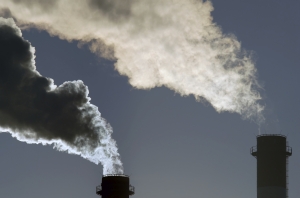Analysis indicates that the National Energy Productivity Plan (NEPP) can be aggressively applied in the immediate-term to deliver large scale emissions reductions at a negative marginal cost. In this way, a scaled up NEPP is able to become the main driver of Australia’s emissions reduction policy framework through to 2030.
Focusing on negative cost abatement opportunities via regulation would see Australia follow the California climate change policy model, where the majority of that state’s abatement is derived from negative cost renewable energy, fuel efficiency and vehicle efficiency regulations. These regulations are supported by a smaller contribution from high emitting covered sectors.
Key findings include:
-
- Marginal abatement cost (MAC) analysis indicates that Australia has a significant volume of cost saving opportunities, with 20 per cent of all abatement activities across the economy having a ‘negative marginal cost’. These opportunities include distributed solar photovoltaics (PV), fuel efficiency and industrial efficiency with each representing a major opportunity to reduce emissions with a positive return over the lifetime of an investment.
-
- Modelling indicates that energy productivity activities can contribute around 43 per cent of Australia’s abatement task to meet its 2030 target, or 66 Mt of emissions reductions in 2030. Negative cost opportunities therefore represent Australia’s low hanging fruit for policy design, and are expected to be aggressively targeted by the federal government under the NEPP.
-
- The NEPP is able to be applied in the immediate-term to deliver large scale emissions reductions while also triggering considerable financial benefits. In this way, the scheme is able to become the main driver of Australia’s emissions reduction policy framework through to 2030.
-
- With a large volume of negative cost efficiency opportunities, Australia is uniquely positioned to emulate aspects of the Californian climate policy framework by targeting improved energy and fuel efficiency standards to drive large-scale reductions in greenhouse gas emissions, supported by a smaller contribution from high emitting companies.
-
- While Australia can adopt the Californian approach, tighter policy settings will be required to limit emissions growth from large industrial emitters covered by the safeguard mechanism.
-
- In this way, industry emissions represent Australia’s Achilles heel on climate policy. Even if aggressive energy productivity regulation is introduced under the NEPP, these gains will be undermined by a small number of Australia’s largest emitting businesses unless industry is held accountable to stronger emissions baselines.
In this update, we analyse the role of the NEPP in unlocking negative cost opportunities in Australia, and present initial analysis of our updated marginal abatement cost (MAC) curve to 2030.













